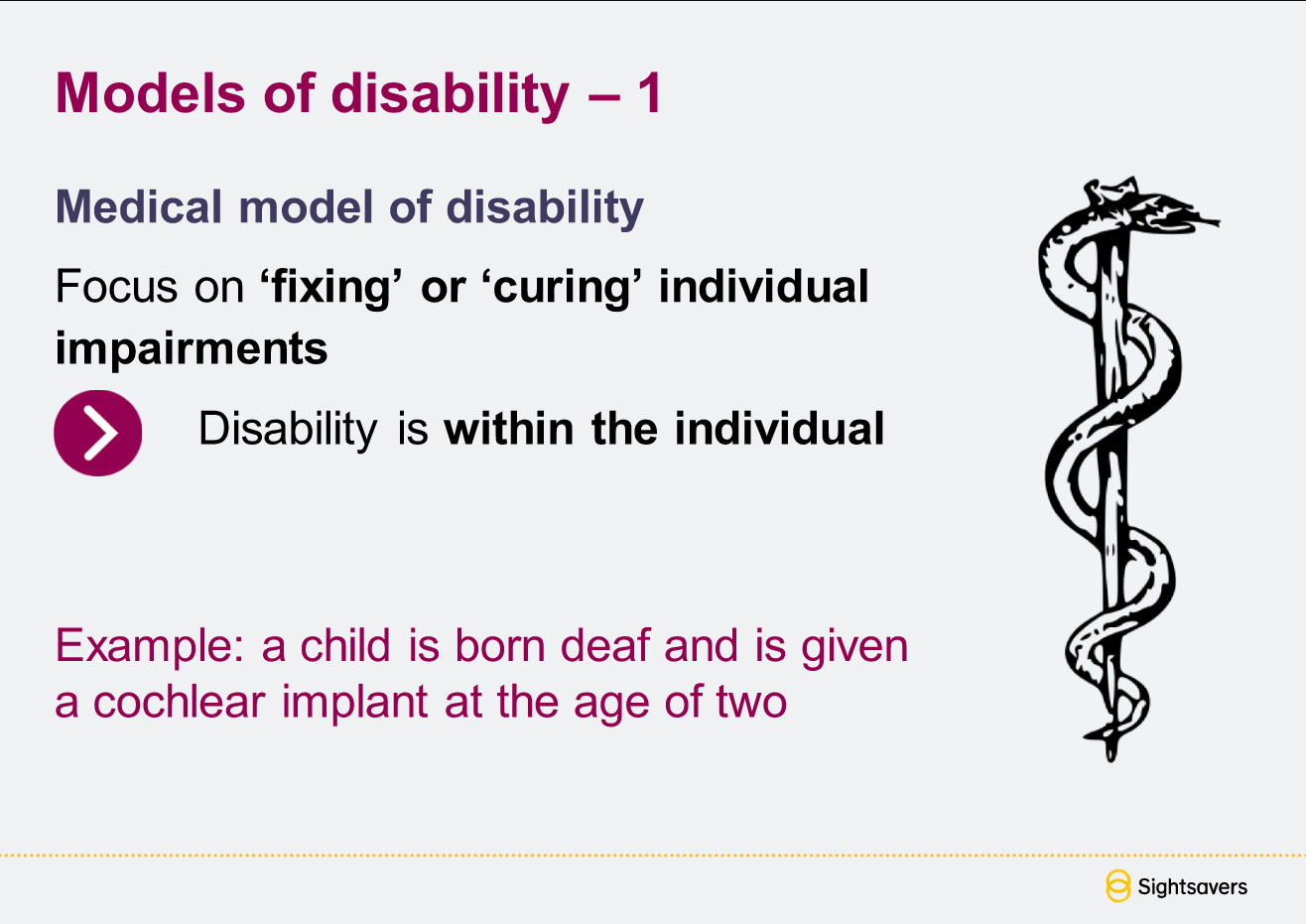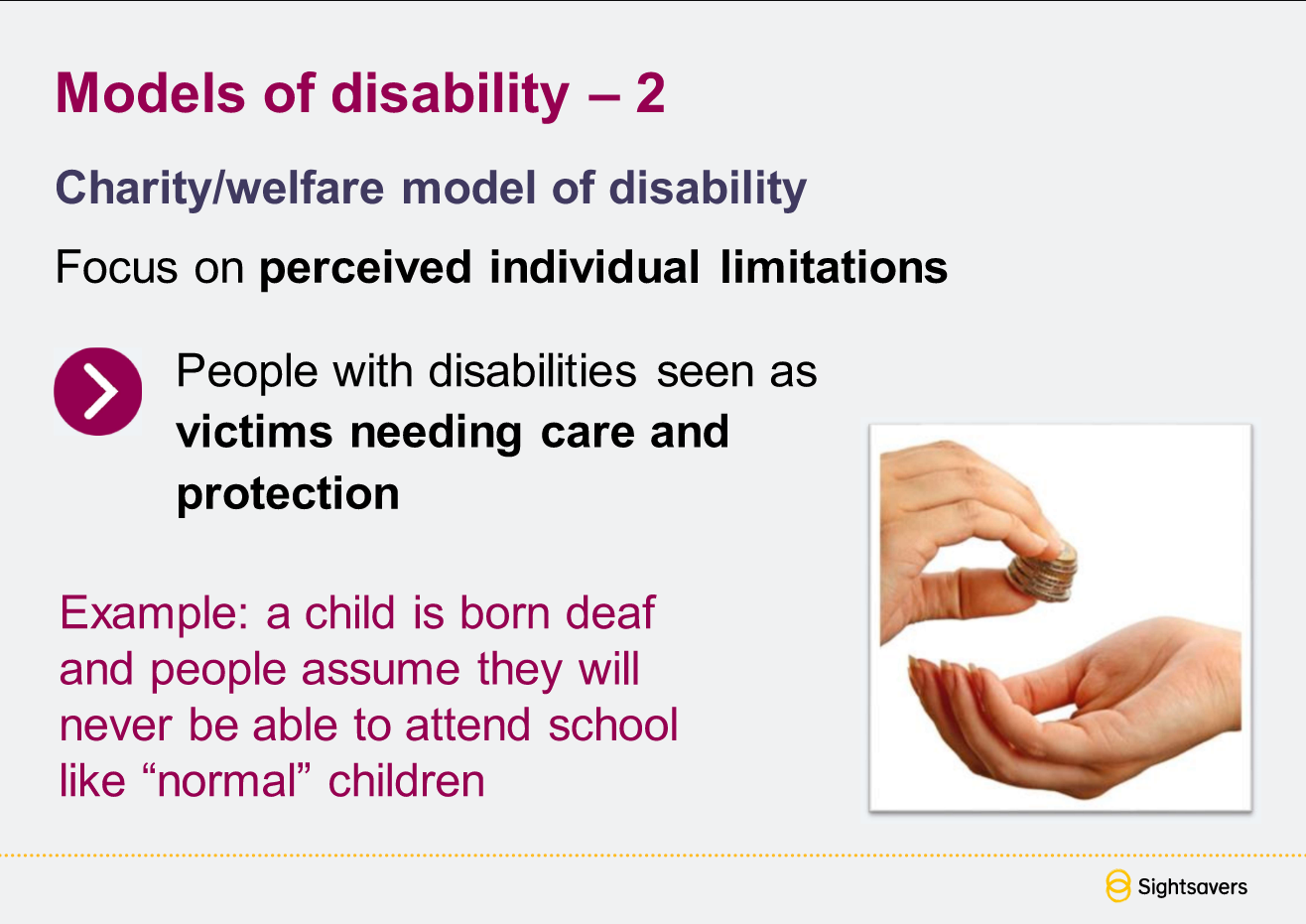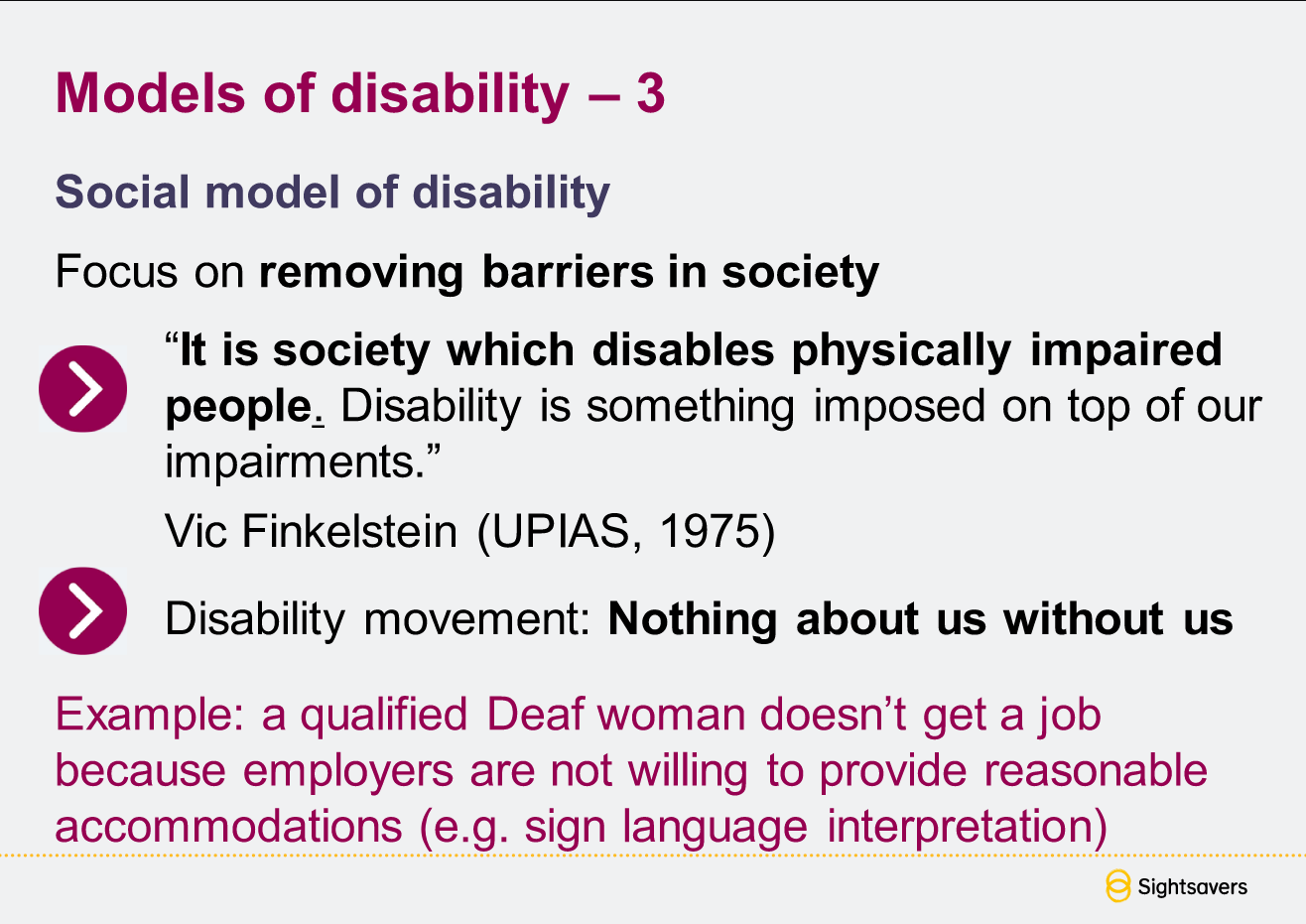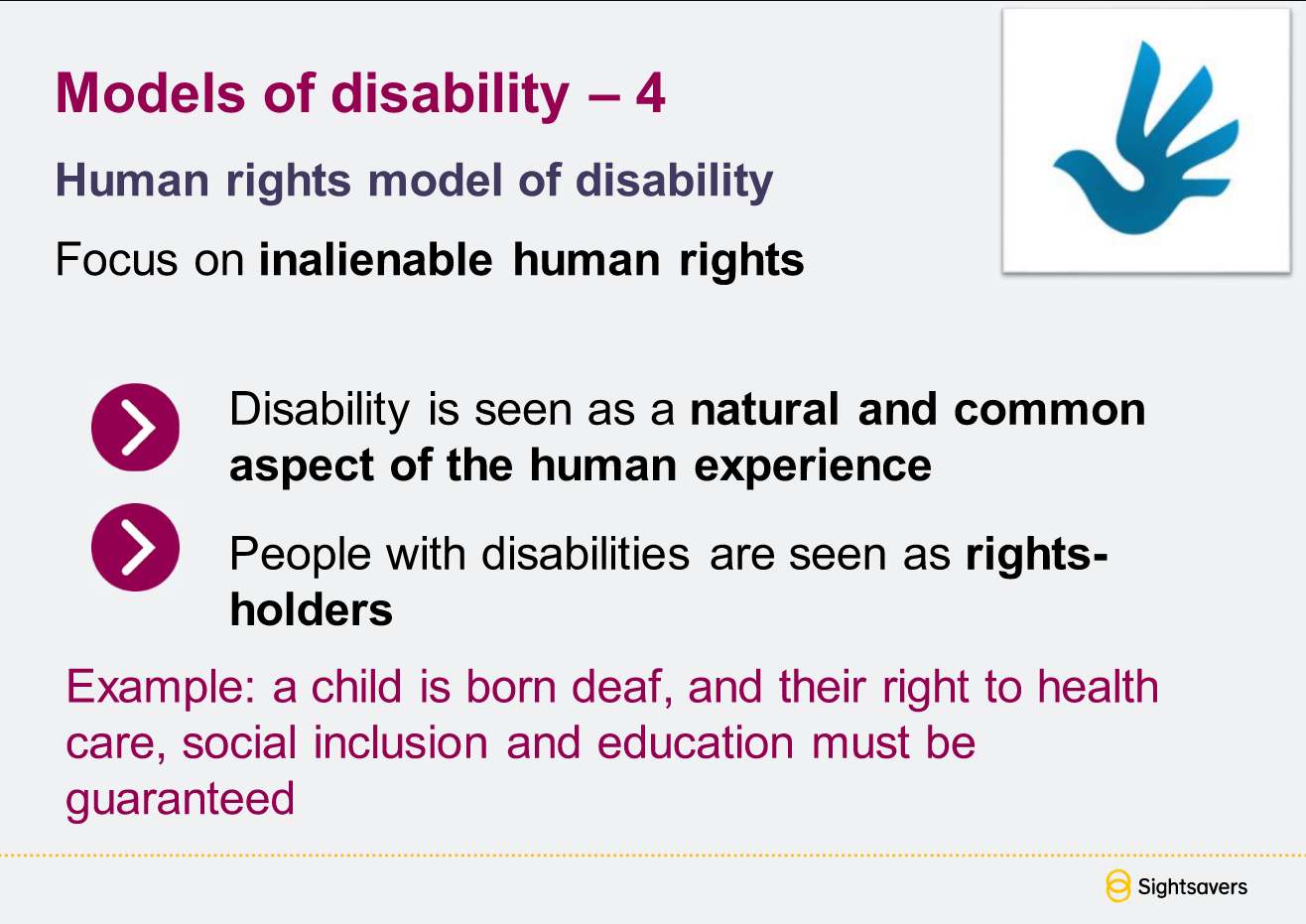Models of disability
Sightsavers recognizes that there are 4 mindsets/models how you can approach disability:
- Medical
- Charity/welfare
- Social
- Human rights
Medical model
Focus on ‘fixing’ or ‘curing’ individual impairments
Disability is within the individual
Example: A child is born deaf and is given a cochlear implant at the age of two.

Charity/welfare model
Focus on perceived individual limitations
People with disabilities seen as victims needing care and protection
Example: a child is born deaf and people assume they will never be able to attend school like ‘normal’ children.

Social model
Focus on removing barriers in society
It is society which disables physically impaired people. Disability is something imposed on top of our impairments.
/Vic Finkenstein
Disability movement: Nothing about us without us
Example: a qualified Deaf woman doesn’t get a job because employers are not willing to provide reasonable accomodations (like sign language interpretation)

Human rights model
Focus on inalienable human rights
Disability is seen as a natural and common aspect of the human experience
People with disabilities are seen as rights-holders
Example: a child is born deaf, and their right to health care, social inclusion and education must be guaranteed.

Conclusions
These models are not exclusive - you can operate on many levels at the same time. Sightsavers does this: adds are targeted from the level 2, internally operate on level 3 and level 4.
Historically, we are moving ‘up’ - just about 10 years ago mainstream was level medical and chairity models, now the shift is happening towards mainstreaming social and human rights models as also UN has ratified the rights of people with disabilities a long time ago.